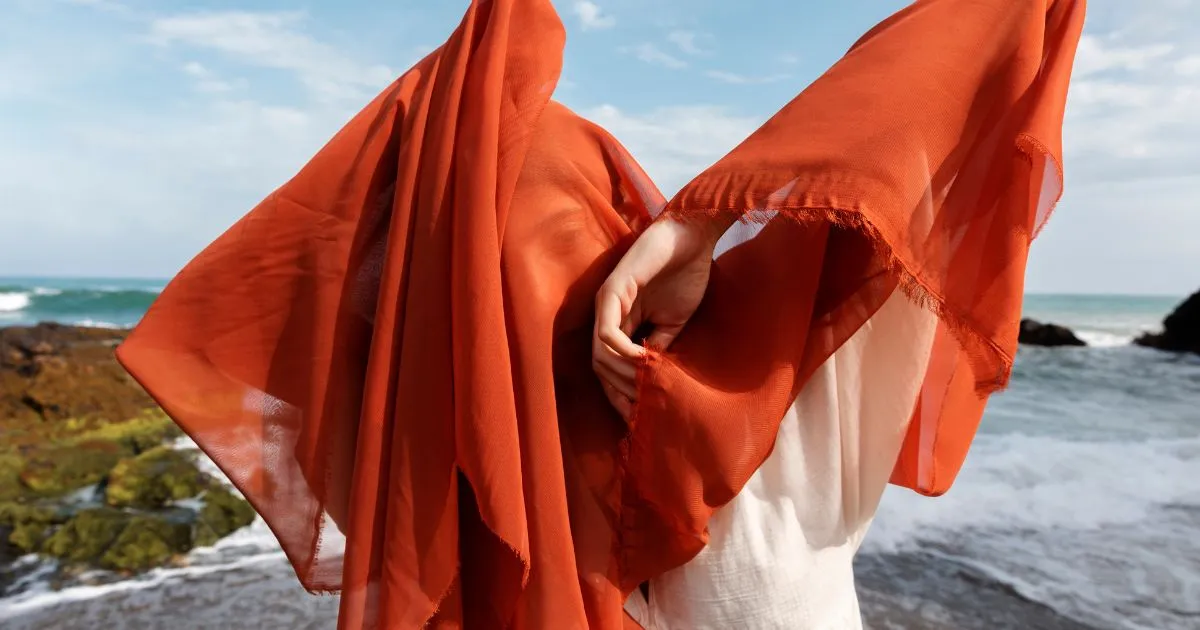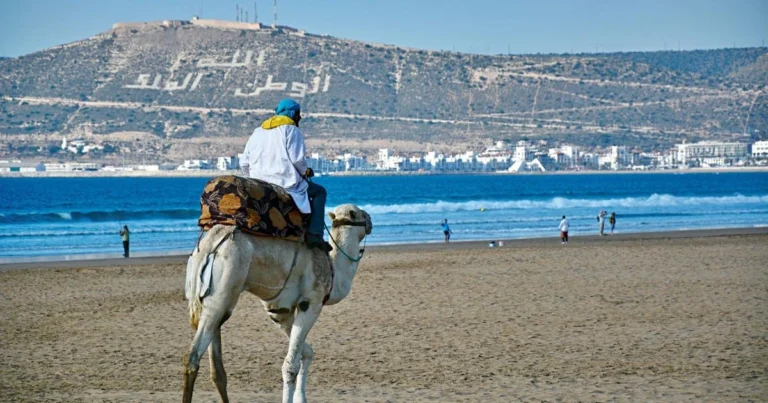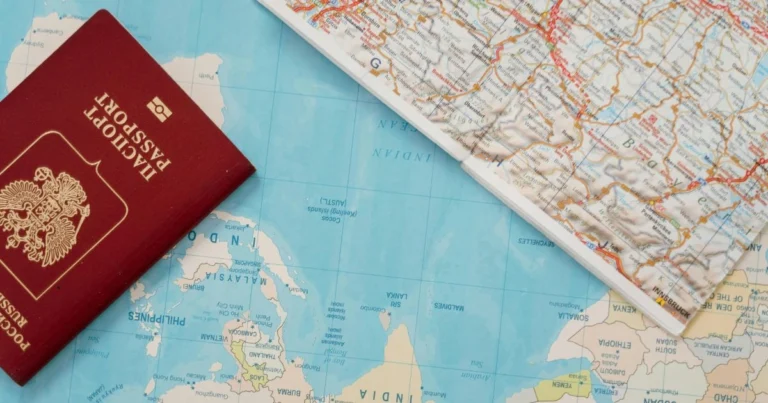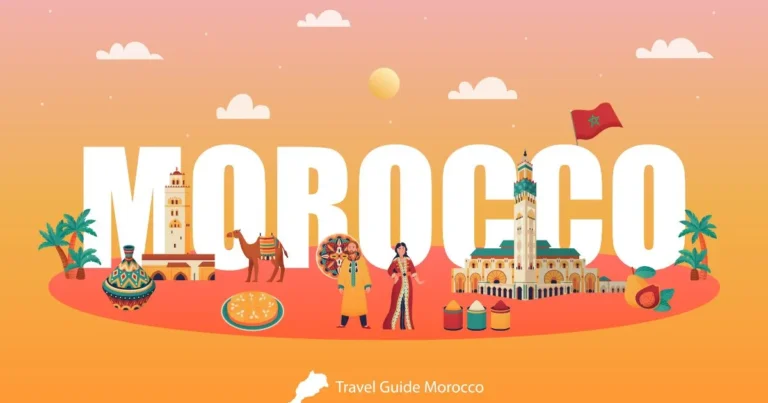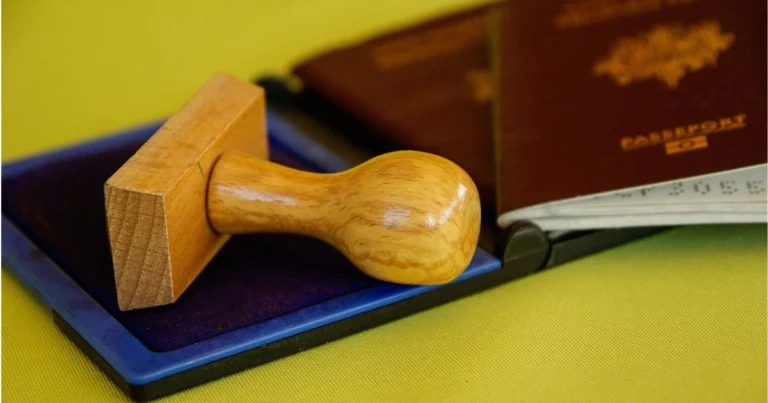What to Wear in Morocco: Your Complete Guide to Dressing Appropriately and Comfortably
Table of Contents
Stepping off the plane in Morocco can feel like entering a different world – and in many ways, it is. The vibrant souks, ancient medinas, and stunning landscapes create an unforgettable experience, but knowing what to wear in Morocco can make the difference between feeling confident and comfortable versus standing out as an unprepared tourist. Whether you’re planning to explore the bustling streets of Marrakech, venture into the Sahara Desert, or wander through traditional villages, dressing appropriately shows respect for local culture while ensuring your comfort and safety.
Morocco’s rich Islamic heritage, diverse climate zones, and blend of traditional and modern influences create unique considerations for travelers. This comprehensive guide will equip you with everything you need to know about what to wear in Morocco as a woman and as a man, helping you navigate cultural expectations while staying comfortable throughout your journey.
Understanding Moroccan Culture and Dress Codes

The Importance of Modesty in Moroccan Society
Morocco is a nation with a Muslim majority that places significant importance on and holds in high regard modest clothing and attire. This cultural norm isn’t just about religious observance – it’s woven into the fabric of daily social interactions. Understanding this principle is crucial for any traveler wanting to show respect and avoid unwanted attention.
For both men and women, the general rule is simple: cover your shoulders, chest, and knees in public spaces. This doesn’t mean you need to dress in traditional Moroccan clothing, but rather that your Western wardrobe should align with local standards of modesty.
“Dressing modestly in Morocco isn’t about restricting yourself – it’s about showing respect and ensuring you can move comfortably through different social situations.” – Cultural Etiquette Expert
Cultural Sensitivity Across Different Settings
Not all areas of Morocco have the same dress code expectations. Here’s how to navigate different environments:
Tourist Areas and Modern Cities: Places like Marrakech’s Gueliz district, Casablanca’s city center, and beach resorts in Agadir tend to be more relaxed. However, modesty is still appreciated and recommended.
Traditional Medinas and Rural Villages: These areas maintain stricter cultural norms. Covering arms, legs, and chest becomes essential for respectful interaction with locals.
Religious Sites: Mosques require the most conservative dress. Women should cover their hair, arms, and legs completely, while men should wear long pants and shirts with sleeves.
Beach Areas: Designated tourist beaches allow more relaxed attire, including swimwear, but cover up when walking to and from the beach.
What to Avoid: Clothing Items That May Cause Issues
Understanding what not to wear is just as important as knowing appropriate options:
- Very short shorts or skirts (above the knee)
- Low-cut tops or dresses showing cleavage
- Sleeveless tops with thin straps or tank tops in conservative areas
- Tight-fitting clothing that emphasizes body shape
- Transparent or sheer fabrics without appropriate underlayers
- Clothing with offensive language or imagery
Moroccan Climate and Seasons: A Layering Approach
General Climate Overview
Morocco’s geography creates diverse climate zones that significantly impact clothing choices. The country features Mediterranean coastal areas, hot desert regions, and cool mountain ranges – sometimes all within a day’s travel. Understanding these variations helps you pack efficiently and dress appropriately for each environment.
Coastal Areas: Enjoy mild temperatures with ocean breezes but can experience humidity. Desert Regions: Feature extreme temperature variations between scorching days and surprisingly cool nights. Mountain Areas: The Atlas Mountains bring cooler temperatures and potential precipitation year-round.
Seasonal Breakdown and Clothing Strategies
Spring (March-May): The Perfect Season for Layers
Spring offers some of Morocco’s most pleasant weather, making it ideal for travelers. What to wear in Morocco during spring revolves around versatile layering:
- Daytime: Lightweight long-sleeved shirts, comfortable pants, and breathable fabrics
- Evening: Light sweater or jacket as temperatures can drop significantly
- Footwear: Comfortable walking shoes with good support for exploring cities and countryside
- Accessories: Sunglasses, hat, and light scarf for sun protection and modesty
Summer (June-August): Beat the Heat with Smart Fabric Choices
Summer in Morocco can be intense, especially in inland cities and desert areas. The key is choosing breathable, loose-fitting clothing in light colors:
- Essential Fabrics: Linen and cotton become your best friends
- Tops: Long-sleeved shirts provide sun protection while staying cool
- Coverage: Light scarves serve dual purposes – sun protection and cultural appropriateness
- Hydration Gear: Always carry water and consider clothing with UV protection
Autumn (September-November): Comfortable Transition Weather
Autumn mirrors spring conditions but with potentially warmer days and cooler evenings:
- Layering Strategy: Similar to spring but with slightly warmer options for evening
- Rain Preparation: Light rain jacket for occasional showers
- Versatility: Pack pieces that work for both warm days and cool nights
Winter (December-February): Surprising Cold Requires Preparation
Many travelers underestimate Morocco’s winter temperatures, especially in mountains and desert areas:
- Essential Items: Warm sweaters, jackets, and potentially a coat
- Rain Gear: Morocco receives most rainfall during winter months
- Footwear: Waterproof or water-resistant shoes become important
- Regional Variation: Coastal areas remain milder than inland regions
Regional Clothing Variations
Marrakech and Inland Cities: Prepare for temperature extremes and dress conservatively in traditional areas.
Sahara Desert: Loose, light-colored clothing for day trips, with warm layers for overnight stays.
Atlas Mountains: Layered approach with hiking-appropriate gear and potential for cold weather gear.
Coastal Cities: More relaxed dress codes but still culturally sensitive choices.
Specific Clothing Recommendations for Women
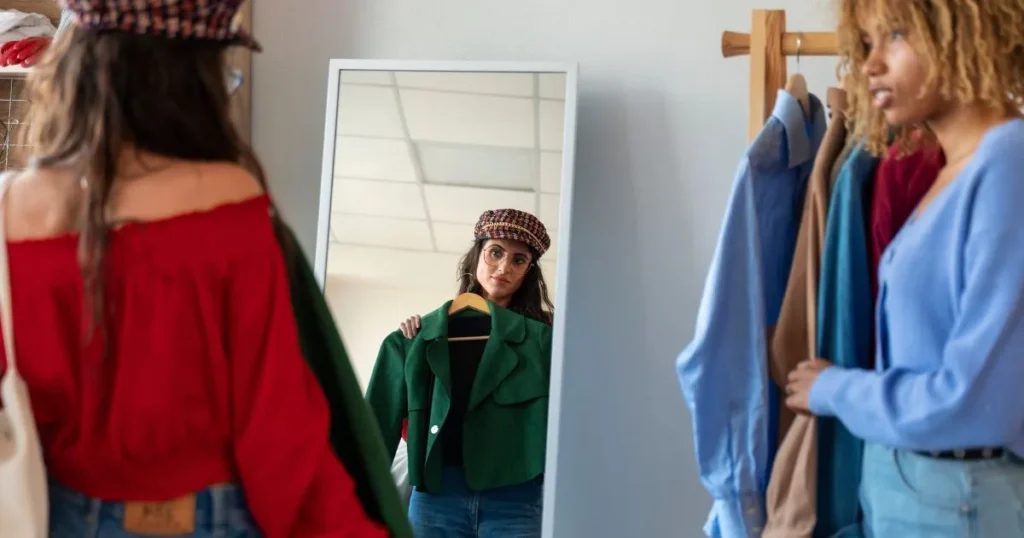
Tops: Balancing Comfort and Cultural Sensitivity
Loose-fitting T-shirts: Choose breathable fabrics like cotton or linen blends. Opt for styles that don’t cling to the body and provide adequate coverage of the chest and shoulders.
Blouses and Tunics: These offer excellent coverage while maintaining comfort. Look for designs with modest necklines and sleeves that cover at least to the elbow.
Long-sleeved Options: Essential for sun protection and cultural appropriateness. Lightweight fabrics prevent overheating while providing necessary coverage.
Bottoms: Practical and Respectful Choices
Long Skirts: Maxi skirts and midi-length options work perfectly for Morocco. Choose flowing styles that don’t restrict movement while exploring.
Loose-fitting Pants: Linen and cotton pants offer comfort and coverage. Steer clear of very form-fitting styles, though pants that fit well are typically considered appropriate.
Jeans: Perfectly acceptable in most areas of Morocco. Choose comfortable fits for walking and opt for lighter washes in summer to reflect heat.
Dresses: Elegant and Practical Solutions
Maxi Dresses: Long, flowing dresses represent ideal Moroccan style for female travelers. They’re comfortable, culturally appropriate, and perfect for the climate.
Midi Dresses: Knee-length or longer dresses work well when paired with leggings or worn in more relaxed tourist areas.
Dress Considerations: Choose styles with modest necklines and adequate arm coverage. Wrap dresses and shirt dresses often work well.
Head Covering: When and Where It Matters
Mosque Visits: Head covering becomes mandatory. Pack a lightweight scarf that can easily cover your hair completely.
Rural Areas: Consider carrying a scarf for situations where additional modesty might be appreciated.
Practical Benefits: Scarves also provide sun protection and warmth during temperature fluctuations.
Footwear for Female Travelers
Comfortable Walking Shoes: Morocco involves significant walking on varied surfaces. Choose supportive shoes that can handle cobblestones, sand, and uneven terrain.
Sandals: Closed-toe sandals work well in most situations. Avoid flip-flops for extensive walking.
Versatile Options: Shoes that work for both day exploration and evening activities maximize packing efficiency.
Specific Clothing Recommendations for Men
Tops: Simple and Effective Approaches
T-shirts: Choose well-fitted but not tight options. Solid colors or simple patterns work best and show respect for local customs.
Long-sleeved Shirts: Essential for sun protection and cultural sensitivity, especially when visiting traditional areas or religious sites.
Polo Shirts: Offer a smart-casual option that works well in various settings throughout Morocco.
Bottoms: Comfort Meets Cultural Appropriateness
Long Pants: The cornerstone of appropriate male attire in Morocco. Linen and cotton options provide comfort in heat while meeting cultural expectations.
Khakis and Chinos: Versatile options that work for both casual exploration and more formal dining situations.
Jeans: Generally acceptable throughout Morocco. Choose comfortable fits for walking and exploring.
Outerwear and Accessories
Light Jackets: Essential for evening temperature drops and air-conditioned spaces.
Sweaters: Necessary for winter travel or mountain regions.
Essential Accessories: Sunglasses, hats, and sunscreen become crucial for comfort and health.
Activity-Specific Packing Guide
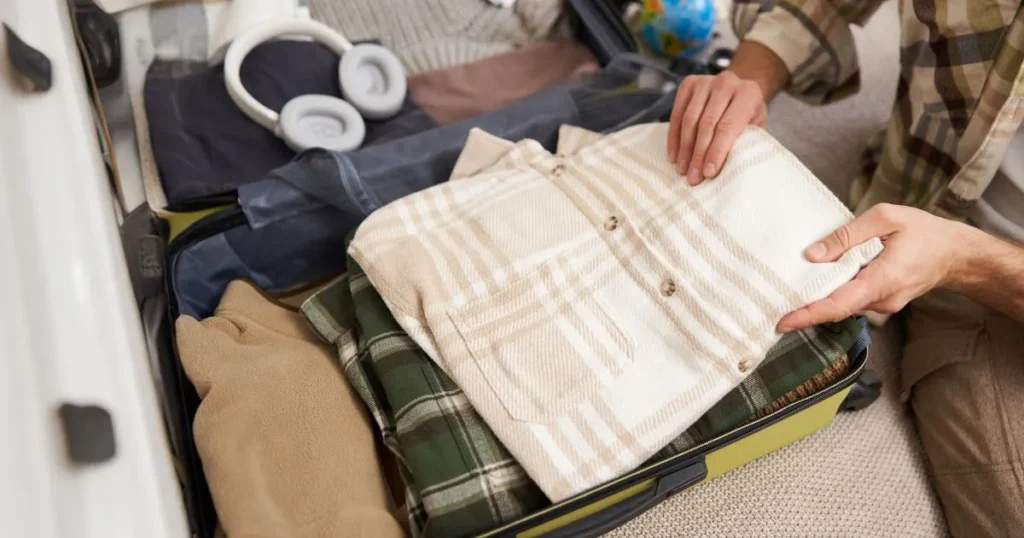
Visiting Mosques: Respectful Attire Requirements
For Women:
- Long sleeves and pants or long skirt
- Head scarf to cover hair completely
- Modest neckline with no cleavage showing
- Slip-on shoes for easy removal
For Men:
- Long pants (no shorts)
- Shirt with sleeves (no tank tops)
- Slip-on shoes for convenience
General Tips:
- Dress more conservatively than usual
- Remove shoes before entering prayer areas
- While certain mosques offer coverings for visitors, it’s advisable to bring your own as a precaution
Desert Tours: Protection from Elements
Essential Items:
- Loose, light-colored clothing to reflect heat
- Full-length sleeves and trousers provide protection from sun exposure and sandy conditions
- Closed-toe shoes to prevent sand infiltration
- Scarf or shemagh for face protection during sandstorms
Layering Strategy:
- Light layers for hot days
- Warm layers for cold desert nights
- Breathable fabrics that wick moisture
Hiking in the Atlas Mountains
Clothing Requirements:
- Moisture-wicking base layers
- Insulating mid-layers
- Waterproof outer shell
- Sturdy hiking boots with ankle support
- Hat and sunglasses
Seasonal Considerations:
- Summer: Focus on sun protection and breathability
- Winter: Include warm layers and potential snow gear
- All seasons: Pack rain protection
City Exploration: Marrakech and Fes
Daily Wear:
- Comfortable walking shoes with good support
- Modest clothing suitable for traditional areas
- Sun protection accessories
- Crossbody bag or money belt for security
Evening Options:
- Slightly dressier options for restaurants
- Light jacket for temperature changes
- Comfortable shoes for walking on cobblestones
Essential Packing Checklist
Clothing Essentials
For Women:
- [ ] 3-4 modest tops (mix of short and long sleeves)
- [ ] 2-3 pairs of comfortable pants
- [ ] 1-2 long skirts or maxi dresses
- [ ] Light jacket or cardigan
- [ ] Modest swimwear and cover-up
- [ ] Head scarf for mosque visits
- [ ] Comfortable walking shoes
- [ ] Sandals for casual wear
For Men:
- [ ] 4-5 t-shirts or casual shirts
- [ ] 1-2 long-sleeved shirts
- [ ] 2-3 pairs of long pants
- [ ] Light jacket or sweater
- [ ] Swim shorts and t-shirt for pool
- [ ] Comfortable walking shoes
- [ ] Casual sandals
Accessories and Essentials
- [ ] Sunglasses with UV protection
- [ ] Wide-brimmed hat
- [ ] High SPF sunscreen
- [ ] Insect repellent
- [ ] Small daypack for excursions
- [ ] Money belt or secure wallet
- [ ] Portable phone charger
- [ ] Basic first aid supplies
Climate-Specific Additions
Summer Travel:
- [ ] Extra sun protection
- [ ] Cooling towel
- [ ] Electrolyte supplements
Winter Travel:
- [ ] Warm layers
- [ ] Rain jacket
- [ ] Waterproof shoes
Where to Buy Clothing in Morocco
Traditional Souks: Authentic Shopping Experiences
Best Souks for Clothing:
- Marrakech Souk: Features a wide selection of clothing choices ranging from classic djellabas to contemporary accessories.
- Fes Medina: Known for high-quality traditional craftsmanship
- Essaouira Markets: Great for casual, bohemian-style clothing
Negotiation Tips:
- Start at 30-40% of the initial asking price
- Be ready to leave the negotiation in order to secure the most favorable price
- Shop around to understand typical pricing
- Bargain respectfully and with good humor
Modern Shopping Options
International Brands: Major cities feature familiar international clothing retailers for emergency purchases or additions to your wardrobe.
Local Boutiques: Offer unique pieces that blend traditional Moroccan style with modern sensibilities.
Department Stores: Provide convenient, fixed-price shopping for basic necessities.
Addressing Common Clothing Concerns
“Can I Wear Shorts in Morocco?”
The response is complex and hinges on multiple considerations:
Where shorts might be acceptable:
- Tourist-focused beach areas
- Resort pools and hotel grounds
- Some modern areas of major cities
Where to avoid shorts:
- Traditional medinas and souks
- Rural villages and conservative areas
- Religious sites and cultural attractions
- When interacting with local families
Alternative Solutions:
- Lightweight, loose-fitting pants offer similar comfort
- Convertible pants with zip-off legs provide flexibility
- Longer shorts (knee-length or below) may work in some tourist areas
“Is it Safe to Wear Tank Tops?”
Tank tops present similar considerations to shorts:
Generally avoid in:
- Conservative areas and traditional neighborhoods
- Religious sites
- Rural communities
- Business or formal settings
Potentially acceptable in:
- Beach resorts and pool areas
- Some modern urban districts
- Private hotel spaces
Better alternatives:
- Lightweight, breathable t-shirts
- Short-sleeved blouses with modest necklines
- Loose-fitting tops that provide coverage while staying cool
“What About Swimwear?”
Beach and Pool Etiquette:
- Standard swimwear is generally acceptable at designated beaches and hotel pools
- Cover up when walking to/from beach areas
- Avoid thong-style bikinis or extremely revealing swimwear
- Bring a cover-up or sarong for transitions
Cultural Considerations:
- Public beaches may have different standards than private resort areas
- If uncertain, take note of what those around you are dressed in and dress similarly
- When in doubt, observe what others are wearing and follow suit
Embracing Moroccan Style: Fashion Inspiration
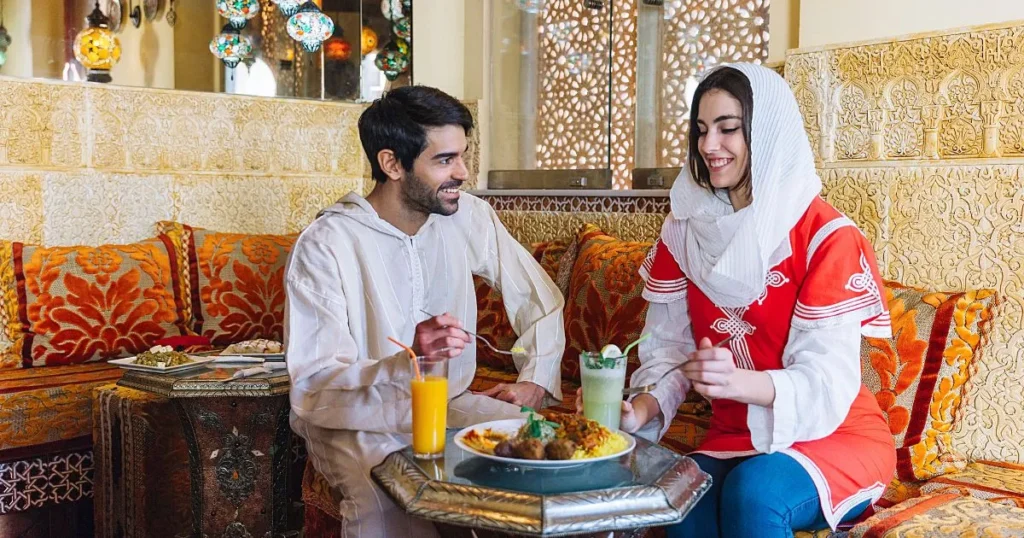
Morocco’s rich textile tradition and vibrant aesthetic offer inspiration for travelers wanting to incorporate local style elements:
Traditional Elements to Consider:
- Flowing, loose-fitting silhouettes
- Rich jewel tones and earthy colors
- Intricate embroidery and patterns
- Layered accessories like scarves and jewelry
Modern Moroccan Fashion:
- Contemporary designers blend traditional craftsmanship with modern cuts
- Sustainable fashion movements emphasize local artisans
- Street style in cities like Casablanca showcases creative cultural fusion
Shopping for Authentic Pieces:
- Look for genuine handcrafted items versus mass-produced tourist goods
- Support local artisans by purchasing directly from makers when possible
- Learn about traditional techniques like hand-weaving and natural dyeing
Final Thoughts: Dressing for Success in Morocco
Successful travel dressing in Morocco comes down to preparation, respect, and adaptability. By understanding cultural expectations, climate considerations, and practical needs, you can create a wardrobe that enhances rather than hinders your Moroccan adventure.
Remember that dressing appropriately in Morocco isn’t about sacrifice or discomfort – it’s about making thoughtful choices that show respect for local culture while ensuring your own comfort and safety. The key lies in finding quality pieces that serve multiple purposes: providing cultural appropriateness, climate comfort, and personal style.
Your clothing choices can actually enhance your travel experience by helping you connect more meaningfully with local people, feel more confident in various settings, and focus on the incredible experiences Morocco offers rather than worrying about your appearance.
Ready to start planning your Moroccan adventure? Consider booking a guided tour that can provide insider knowledge about local customs and hidden gems. Subscribe to our travel newsletter for more destination-specific packing guides and cultural insights that will make your next trip unforgettable.
Frequently Asked Questions
Q: Do I need to pack formal clothing for Morocco? A: Generally, casual modest clothing works for most situations. Pack one nicer outfit for upscale restaurants or special occasions, but formal wear isn’t typically necessary.
Q: Can I do laundry in Morocco? A: Yes, most hotels offer laundry services, and laundromats exist in major cities. This allows you to pack lighter and refresh your wardrobe during longer trips.
Q: What if I forget to pack appropriate clothing? A: Morocco offers excellent shopping opportunities. You can purchase suitable clothing in souks, modern stores, or markets throughout the country.
Q: Are there different dress codes for different age groups? A: Cultural expectations apply to all ages, though older travelers might find slightly more flexibility in tourist areas. The key is always showing respect through modest clothing choices.
Q: How do I balance cultural sensitivity with personal comfort? A: Focus on loose-fitting clothing in breathable fabrics. This combination provides cultural appropriateness while maintaining comfort in Morocco’s climate.
Have you traveled to Morocco? Share your clothing and packing tips in the comments below to help fellow travelers prepare for their own Moroccan adventures!

